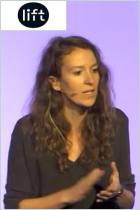Únase a getAbstract para acceder al resumen.

Únase a getAbstract para acceder al resumen.
Josh Linkner
Hacking Innovation
The New Growth Model from the Sinister World of Hackers
2017
¿De qué se trata?
How you can succeed – legally – by emulating how hackers deceive, steal, protect and innovate.
Recommendation
Josh Linkner describes the twisted mind-set and tactics of criminal hackers. He engagingly persuades you to change your attitude toward hacker techniques like crowdsourcing, rapid experimentation, reverse engineering and mash-ups by showing how executives and entrepreneurs can use them to achieve business and social breakthroughs. Even though some suggestions might seem like familiar creative techniques under another name, his ideas offer fresh insights about turning hackers’ methods to good purpose.
Summary
About the Author
Serial entrepreneur Josh Linkner leads the Institute for Applied Creativity and writes magazine and newspaper columns. He also wrote Disciplined Dreaming and The Road to Reinvention.




























Comment on this summary